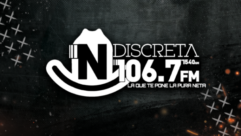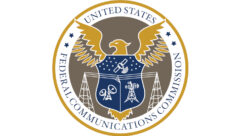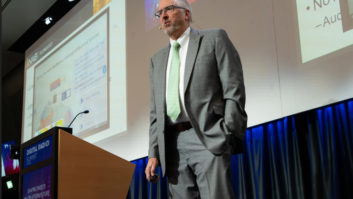The author is chairman of Digital Radio Mondiale.
Much attention has been placed lately on the words “fake news.” Who would have thought that as the media in general is trying to retain or regain the trust of the public, fake news is giving a boost to local radio?

The BBC Director General, Tony Hall, surprised attendees at a local radio celebration, which took place in Coventry in November, by citing fake news as the reason for reprieving BBC local radio of a 13 million dollars budget cut. In battling fake news, the BBC boss sees local radio as an essential part of its role. “Local radio is in the DNA of our communities. I think it is more important than ever,” he said.
Nelson Mattos, an ex-Google executive, reinforced this sentiment by indicating that he feels Facebook and Google have not yet successfully managed to engage with relevant local content and that this point could possibly be one of their main future challenges.
The good news is that local radio is exactly that, local. It speaks directly and immediately to the communities it serves. During emergencies local radio is often on the side of the heroes, as was demonstrated during the Manchester bombing or the Grenfell fire in western London. Local stations, both public and commercial, were at the center of the reporting, deftly changing schedules to accommodate stories and provide necessary information.
We really shouldn’t be surprised then that, similar to the United Kingdom, radio is the frontrunner when it comes to trust for most Europeans. It is notably ahead of both TV and the internet, with just one in three EU citizen saying he or she trusts the internet.
Local radio is not lacking in challenges, however. Often, what we value most about it is also the least tangible. The CEO of the U.K. commercial radio industry group, Radiocentre, said, on the back of its recent survey, “Breaking News: How Listeners Value Commercial Radio News,” which finds radio to be the U.K.’s most trusted medium, that “in the case of local information, news updates, community and charity appeals…this contribution is not always acknowledged or understood.”
So local radio, the embodiment of what makes radio unique, is like a vitamin, something that is good for us, that we need more of in the fight against ignorance and the malicious fake news.
But being local also means radio stations are often small and have few resources, even when they are part of national and powerful broadcasting networks. If the broadcaster is public, then their future is somehow guaranteed, though they are under continuous examination and financial consideration.
It is true that about 50 percent of the U.K. population tunes into local commercial radio every week, according to the Radiocentre survey, but for the small commercial stations, the struggle is really uphill. Local stations equate targeted advertising, and the coverage area and targeted population are generally tiny with proportionate revenue. Often, the importance of these stations is in inverse proportion to their budgets.
What’s more, these local radio stations are now facing the challenge of migrating to digital. At one point there was a scenario in which the big players could go digital, while the smaller stations were to remain anchored to the familiar invention of 1933 — FM.
This scenario has become less acceptable in 2018, however, and other solutions are now being tested. Digital Radio Mondiale, for example, has a local coverage solution able to work in the FM band and also in the same band III used by DAB+. In addition, small-scale DRM, or local coverage DRM, allows for possible upgrading of existing infrastructure, and, therefore, reasonable associated costs.
Small-scale DRM has been tested in India, Brazil, Indonesia, Germany, Italy, Russia, Pakistan and South Africa. Small-scale DAB is also being tested in various locations relative to coverage area, spectrum savings and listener acceptability. There are options for local stations if (and when) they want or can go digital, and it is our job to help ease the transition of these very much needed small, local stations.
This raises the question of the availability of multi-standard receivers and their associated costs. Many professionals are working toward achieving a solution and great strides have been made in recent months. But for some, two standards mean more work, more costs and more headaches.
Let me assure you, however, that while it’s true it takes time and investment to obtain positive results, like with mostly everything, the “negative” information some would like us to believe is, in fact, just “fake news.”












